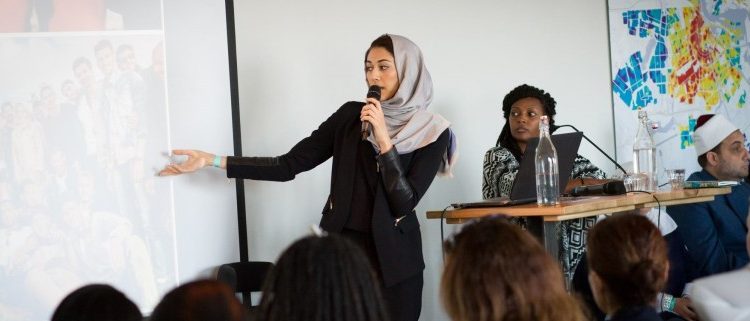Affecting power structures – gender and youth perspectives
In areas of conflict, support from the international community is often greatly needed. However, the design of this support directly affects power structures in the affected community. A crucial question is therefore: Who receives the international community’s support? Who is invited to take part in negotiations? Who is recognized as an important player and what security threats are identified and prioritized?
| Suggested Reading | Conflict Background | GCCT |
By Hajer Sharief
The UN Security Council has acknowledged the role of the international community in impacting on local power structures by recognizing the importance of an approach to peace and security which is inclusive of both women and youth. UN Security Council resolution 1325 has since its adoption in 2000 formed the basis of a policy and programming framework around women, peace and security. In 2015, resolution 2250 started the same process for youth, peace and security. However, a lot remains to be done to make achieve the full impact of these Security Council resolutions in conflict areas.
The two agendas have a lot in common:
- Integrating a gender and a youth perspective in peace building is not only about stopping a war. It’s about reducing violence in all levels: family level, community level, national and international level. It’s about dealing with the structure of violence and objectifying it rather than justifying it.
- Adopting a gender and a youth perspective in addressing conflicts means committing to negations and mediations, and working towards non-violent conflict resolutions.
- A gender and a youth perspective understands that culture is constructed, and that we can de-construct it and re-construct it again. It’s also about brining social change to communities.
Gender and youth perspectives clearly complement each other in creating more inclusive peacebuilding processes. At the same time it’s important to highlight the difference between the two perspectives. A gender perspective in peacebuilding and conflict resolution is about achieving the full image of peace, while adopting a youth perspective is about making this image sustainable and last longer.
In my experience working on peacebuilding in Libya I have often seen women and youth placed in the same category. If we look at the peace agreement of the Libyan peace talks, we can clearly see that women and youth have been lumped together. This is not the right approach, because even though they are related these two groups are not the same.
Despite the important intersection between UNSCR 1325 and 2250 which is ‘young women’ it’s very important for the youth movement to call and ensure a full independent approach for implementing UNSCR 2250 than the approach of the taken for UNSCR 1325.
The youth movement must ensure that new mechanisms and resources will be allocated for the implementation of UNSCR 2250 and not UNSCR 2250 to be treated as “part of” UNSCR 1325.
This responsibility is shared with the women’s movement as well, where women should help youth to advocate for a good implementation for the UNSCR 2250 by sharing their experience with UNSCR 1325 while also ensuring that the UNSCR 2250 will be implemented independently and most importantly make sure that UNSCR 2250 will have independent resources for implementation. Otherwise the women’s and youth movement will end up competing each other. That will only harm both movements.
Hajer Sharief is a 24 year old Libyan activist and a member of UNOY Peacebuilders’ Youth Advocacy Team. When she was 19 co-founded the Together We Build it organization to support the democratic transition in Libya, through emphasizing the relevance of women’s and youth role in the democratic transition phase.
UNOY Peacebuilders’ are a member of the Global Coalition for Conflict Transformation, comprised of organizations committed to upholding and implementing the principles of conflict transformation.
This article was originally published on UNOY Peacebuilders’ website and is available by clicking here. The views expressed in this article do not necessarily reflect the views of TransConflict.




















RT @gcct_tc: Affecting #power structures – #gender and #youth perspectives: In areas of #conflict, support – https://t.co/9jdgjcD6m1
https://t.co/yb4bvF439a
RT @gcct_tc: Affecting #power structures – #gender and #youth perspectives: In areas of #conflict, support – https://t.co/9jdgjcD6m1
RT @ena_ssudan: https://t.co/yb4bvF439a
Affecting #power structures – #gender and #youth perspectives by @unoy_peace – https://t.co/chWC6ho1AR
Affecting #power structures – #gender and #youth perspectives by @unoy_peace – https://t.co/aO1P1H7FGI
RT @TransConflict: Affecting #power structures – #gender and #youth perspectives by @unoy_peace – https://t.co/aO1P1H7FGI
RT @gcct_tc: Affecting #power structures – #gender and #youth perspectives by @unoy_peace – https://t.co/chWC6ho1AR
Affecting power structures – gender and youth perspectives https://t.co/wCrzDn7Ty5 #Nonprofit
Pingback : Affecting power structures - gender and youth p...
RT @Aktivizmo: Affecting power structures – gender and youth perspectives https://t.co/wCrzDn7Ty5 #Nonprofit